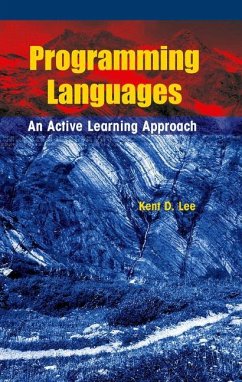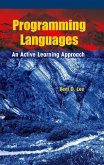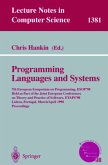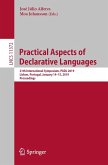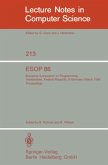Programming Languages: An Active Learning Approach introduces students to three programming paradigms: object-oriented/imperative languages using C++ and Ruby, functional languages using Standard ML, and logic programming using Prolog. This interactive textbook is intended to be used in and outside of class. Each chapter follows a pattern of presenting a topic followed by a practice exercise or exercises that encourage students to try what they have just read. This textbook is best-suited for students with a 2-3 course introduction to imperative programming.
Key Features: (1) Accessible structure guides the student through various programming languages. (2) Seamlessly integrated practice exercises. (3) Classroom-tested. (4) Online support materials.
Advance praise:
"The Programming Languages book market is overflowing with books, but none like this. In many ways, it is precisely the book I have been searching for to use in my own programming languages course. One of the main challenges I perpetually face is how to teach students to program in functional and logical languages, but also how to teach them about compilers. This book melds the two approaches very well." -- David Musicant, Carleton College
Key Features: (1) Accessible structure guides the student through various programming languages. (2) Seamlessly integrated practice exercises. (3) Classroom-tested. (4) Online support materials.
Advance praise:
"The Programming Languages book market is overflowing with books, but none like this. In many ways, it is precisely the book I have been searching for to use in my own programming languages course. One of the main challenges I perpetually face is how to teach students to program in functional and logical languages, but also how to teach them about compilers. This book melds the two approaches very well." -- David Musicant, Carleton College
From the reviews:
"This is a very nice textbook. ... 'An active learning approach' gives a true picture of the style of presentation of the material. Each chapter ends with a list of problems to be solved ... and with references to further reading. There is a web page of the book ... offering supplementary material for students and teachers. The book is beneficial for self-study, too. It starts with an interesting concise survey of computers and computation history, mentioning the influence of mathematics on programming ... ." (Antonín Ríha, Zentrablatt MATH, Vol. 1153, 2009)
"This is an excellent undergraduate-level textbook for courses devoted to understanding programming language concepts ... . exercises with solutions allow the student work either individually or in a collaborative group. ... the text will permit instructors to use any class time for problem solution, discussion, and collaborative learning, including writing codes. ... highly recommended to those teaching undergraduate programming language courses, and as a self directed study guide for professionals who wish to enhance their understanding of some of the newer languages ... ." (E. A. Unger, ACM Computing Reviews, March, 2009)
"This is a very nice textbook. ... 'An active learning approach' gives a true picture of the style of presentation of the material. Each chapter ends with a list of problems to be solved ... and with references to further reading. There is a web page of the book ... offering supplementary material for students and teachers. The book is beneficial for self-study, too. It starts with an interesting concise survey of computers and computation history, mentioning the influence of mathematics on programming ... ." (Antonín Ríha, Zentrablatt MATH, Vol. 1153, 2009)
"This is an excellent undergraduate-level textbook for courses devoted to understanding programming language concepts ... . exercises with solutions allow the student work either individually or in a collaborative group. ... the text will permit instructors to use any class time for problem solution, discussion, and collaborative learning, including writing codes. ... highly recommended to those teaching undergraduate programming language courses, and as a self directed study guide for professionals who wish to enhance their understanding of some of the newer languages ... ." (E. A. Unger, ACM Computing Reviews, March, 2009)

